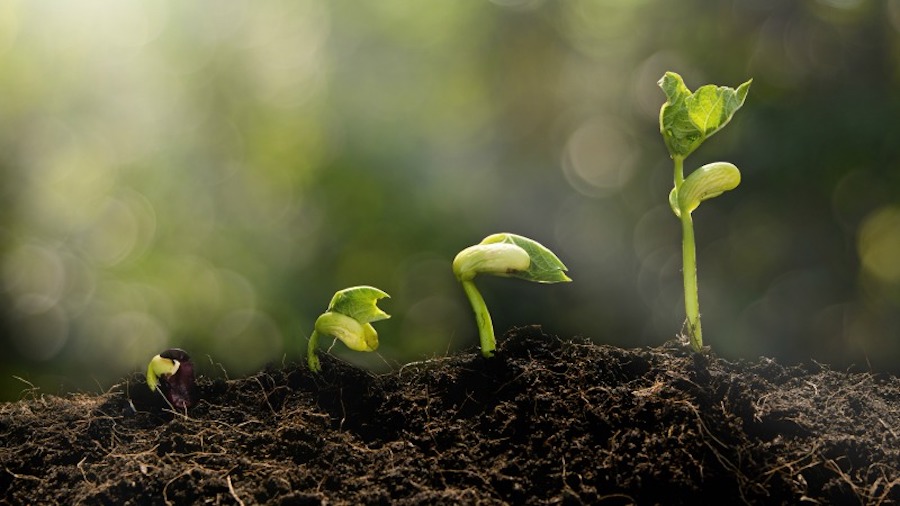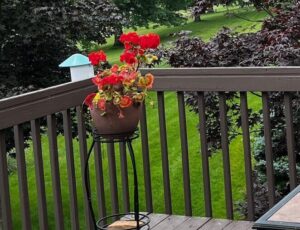I was not able to plant my veggies garden this year. It’s now the height of summer, and I keep buying fruit at the grocery store and throwing it away after one bite. It’s either hard as a rock, dry as a bone, tastes bland or a combination of all three!
When I was a very small girl, the man next door to us had a small trunk garden business. He grew veggies in the garden behind the garage. I remember sneaking over the fence and taking a tomato and eating it out of hand like an apple. And speaking of apples, the man three doors down had fruit trees in his back garden. I use to climb the apple trees but I sometimes ar the apples and plums. You could eat too many and give yourself a bellyache….but they tasted great!
I don’t know when I started to notice the lack of good fruit and veg; especially fruit. Many people worry about GMO- stuff, but that is not why the fruit is sooo bad.
It comes down to the size of the USA and the converting from local farmers to the giant megafarm.

Four Components of Good Food
There are four main components needed to produce tasty fruit and veg. I have placed them in order of importance.
Sun Ripening. Todays mass-produce agri super farms pick their crops early and then place the plants in coolers for transport. Gases are introduced and temperatures manipulated to encourage a faux ripening.
Time from picking to table. If you want the very best of the produce, you must pick just before eating. I know that is true from personal. Green beans on corn on the cog picked within a couple of hours of eating still retain their simple sugars. As time continued the starch in the plant increases, and it loses some of its sweetness and flavor. Imagine your beans are in a bucket on the shelf and have been a week in the store and weeks in a cooler truck before that! No wonder they have little taste.
Good soil. I have had a garden in each house I lived in- four in total. I must admit the Ohio clay does not make a great garden medium, but I have always augmented our soils by rotor tilling with natural augmenters: manures, compost, natural fertilizers. The health of the plant and the taste of the crop all benefit from the addition of compost, Sweetpeat, and others add-ons.
Good Gardening. All gardens require work to stay healthy. You do have to prune and weed, water and fertilize to have a good garden. Pest control is another must. Taking sucker branches off tomatoes help the plant to be stronger and produces more fruit.
Seeds and Plants. You need to investigate the source of your seed and plantings. Below is a detailed accounting of the need to check your seeds and plants. But to skip to the chase; there are three types of seed and plants. The manufacturing of the seed determines their type. – if you like.

Natural cross-pollinated, or natural selection found in heirloom seeds and plants are the best for the old world taste. Next would be open-pollinated crops. Then hybrid seed and plants. However, you must be careful, as some of these plants were bred to look good and grow well but not necessarily for flavor. Hybrid seed and plants are the most commonly used and have the most variation. Some good, many bad as far as taste is concerned.
Some GMO plants or seed might be next in the flavor index. I am very aware of the distrust; some likely earned, in GMO products. But about 90+% off all papaya grown in Hawaii is GMO due to crop failure from a plant virus. A genetic modification saved that crop there.
Hybrid vs Heirloom Gardening
In early farming, in the 1800s, all crops grew seed or reproduced by cross-pollination; you know bees and wind moving pollen from to plant.
In the early 1900s scientists, spurred on by genetic experiments like Mendel’s and by serious gardeners crossing of plants like orchids and roses to breed new varieties. The corn industry was suffering in the midwest, the depression was fast approaching, and the concept and use of hybrid corn wholeheartedly. The crop was hardier than the old cross-bred strain, and it had a more significant yield. So began the first wide-range use of hybrid farming. For a detailed explanation of the different forms of crops – hybridization see here.
Here is an example of a positive for the use of a hybrid. Let’s say you have a melon that tastes great and grows rapidly, but it is susceptible to disease, and you have another melon that doesn’t grow as well but is disease resistant. You cross breed – cross-pollinate those plants, and you get a hybrid seed. That hybrid plant is what you want to grow.
Now that sounds fine, we’ve been doing this with corn, roses, and other plants for years, but the hybrid melon will not produce seeds that will reproduce the hybrid. So the grower crosses all those original melons and sells the hybrid seed to the farmer. The farmer gets the better melon, and the other old melons are no longer used for commercial farming. But that farmer has to buy that hybrid seed every year because the hybrid plant’s seed will not remain true to the hybrid plant. It takes years and year for the grower to develop a hybrid seed that is reproducible.
Seeds today
We grow plants from seeds in four ways.
- Seed made by open pollination- bees, wind, birds, etc. The seed comes from natural variations in a similar plant. This process is the way farming existed until the early 1900s. Farmers can collect those seed to use for the next crop. As long as no pollen is shared between different varieties within the same species, then the seed produced will remain true-to-type year after year.
- Heirloom seed. An open pollination method for a specified age of the plant. An heirloom plant has a history passed on from generation to generation. The seed is produced by open pollination using old varieties of the plants.
- Hybrid
Seed made under the strict control of the parent plants. The plants are usually initially cross-pollinated by the producer, and he then owns the patent for that variation. That producer can then sell the initial plant for the fruit it produced. More likely, he ( the company) will continue to experiment with pollination to get a stable seed. That can take ten years or more.

Said another way: The gardeners who use hybrid plant varieties must purchase new seed every year. Hybrid seeds can be stabilized, becoming open-pollinated varieties, by growing, selecting, and saving the seed over many years.
- GMO- This is done in a lab. A gene from one plant variety or from an organism is attached to another to produce a unique, not found in nature. As for seeds, GMO seeds do reproduce each year…they are not sterile. These seeds are mainly sold by the Monsanto company….now Bayer. There are still a few chemical companies that make GMO seed other than Monsanto/Bayer.
There is still ongoing controversy about the safety and benefits of GMO seed.
Here’s the full list of food crops for which you can find GMO varieties: Corn, soybeans, cotton (for oil), canola (also a source of oil), squash, and papaya. You could also include sugar beets, which aren’t eaten directly but refined into sugar. There’s also GMO alfalfa, but that goes to feed animals, not for sprouts that people eat. That leaves quite a lot of your garden untouched.
GMO versions of tomatoes, potatoes, and rice have been created and approved by government regulators, but they aren’t commercially available. SEE NPR
My purpose in this posting is to discuss why the fruit I get in the market just doesn’t taste very good. It lacks the juiciness and taste I remember as a youngster. But I also remember, I couldn’t get certain foods or fruits all year round when I was a kid.

My Recommendations
So my recommendation today is to forget the supermarket when you can.
Try to locate a local farmers market in Spring and Summer.
Buy food in season
Winter calls for root veggies and other fall and winter crops
Try to buy organic
Frozen might be better. Depending on the crop source and techniques. If the crop is vine/tree-ripened and immediately taken to a freezing and canning facility that’s better than getting old in a truck or on a shelf before packaging.
If possible, grow your own. Do you have a flower bed outside your house? If so, you can think about putting veg in there also. Container gardening works great for tomatoes. A google search for growing your own can help you find ways to grow fresh.
I was able to find a local market attached to one of the garden nurseries by me. I got terrific tomatoes. The market carried both heirloom and open-pollinated varieties. Nectarines and plums completed my purchase. I had to keep them out in a bowl for a couple of days and boy they were fantastic: juicy and tasty and no mold! When I buy fruit at the grocery store and leave it out to ripen, it goes moldy on me. So I will continue to go there as much as I can this summer.
Can you guys find lovely and tasty fruit and veg? Where are you getting your produce? Hope you can find some delicious fruit and veg this year. Enjoy the benefits of summer foods. Thanks for visiting
Take good care
Dee






